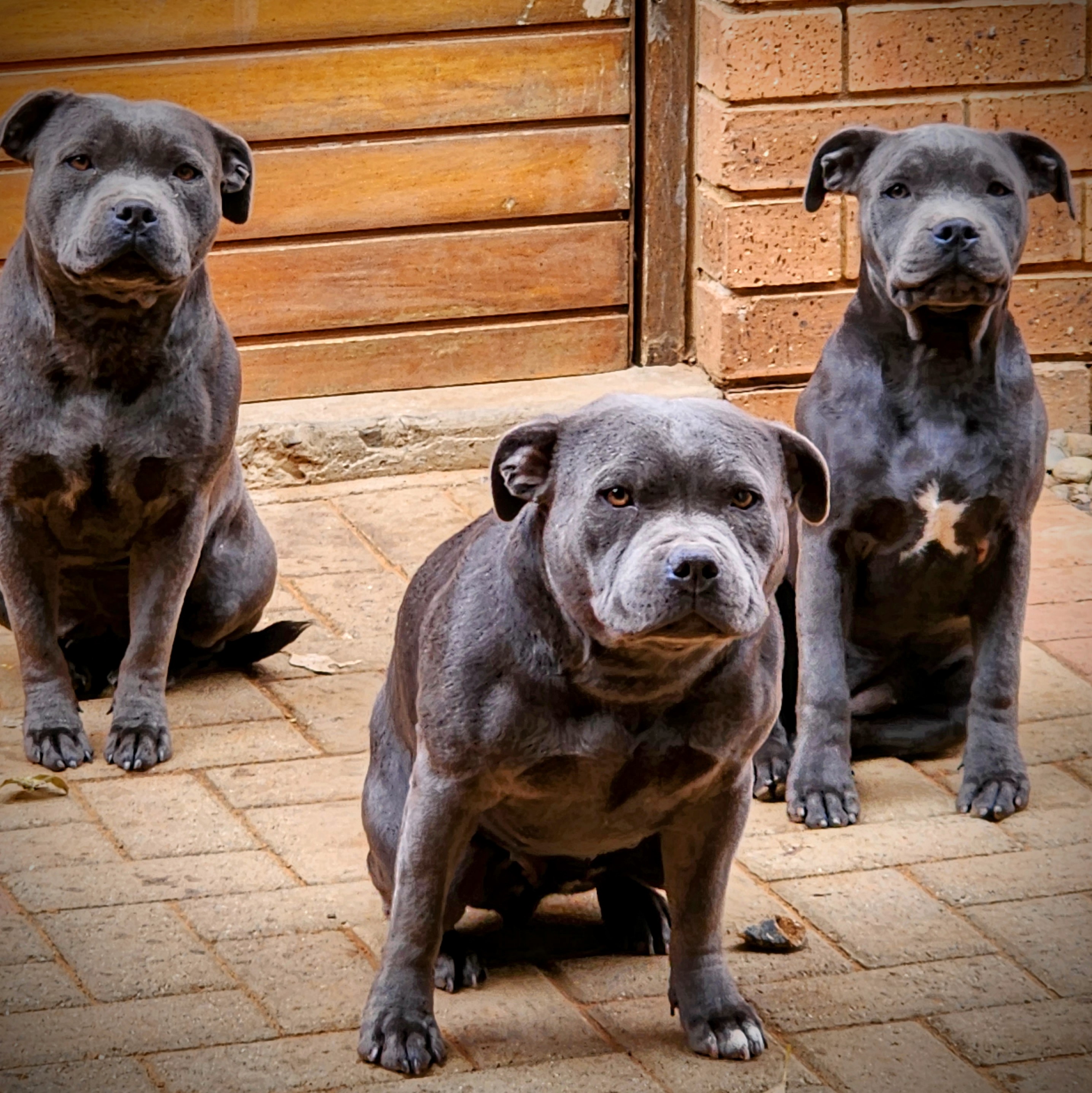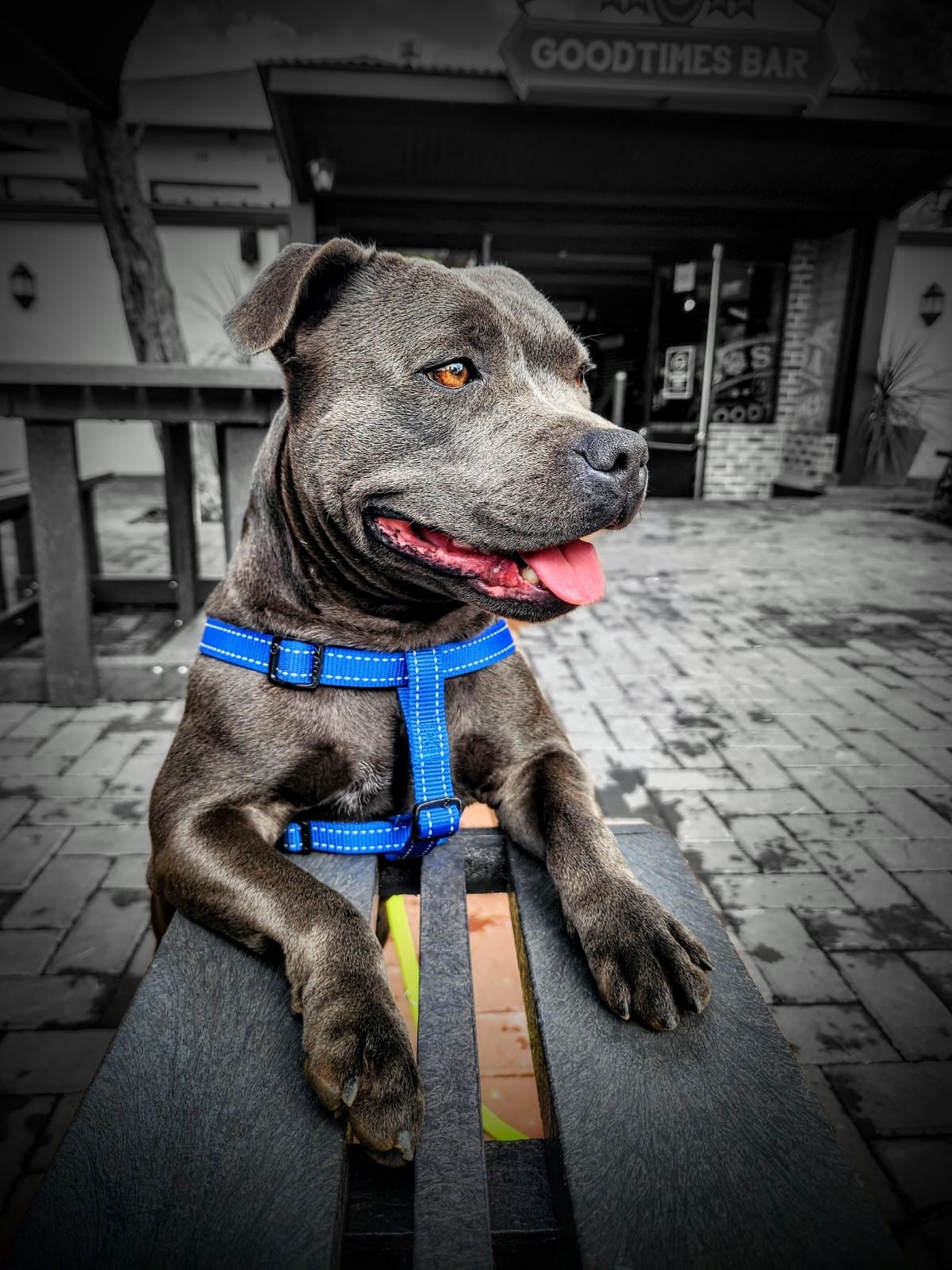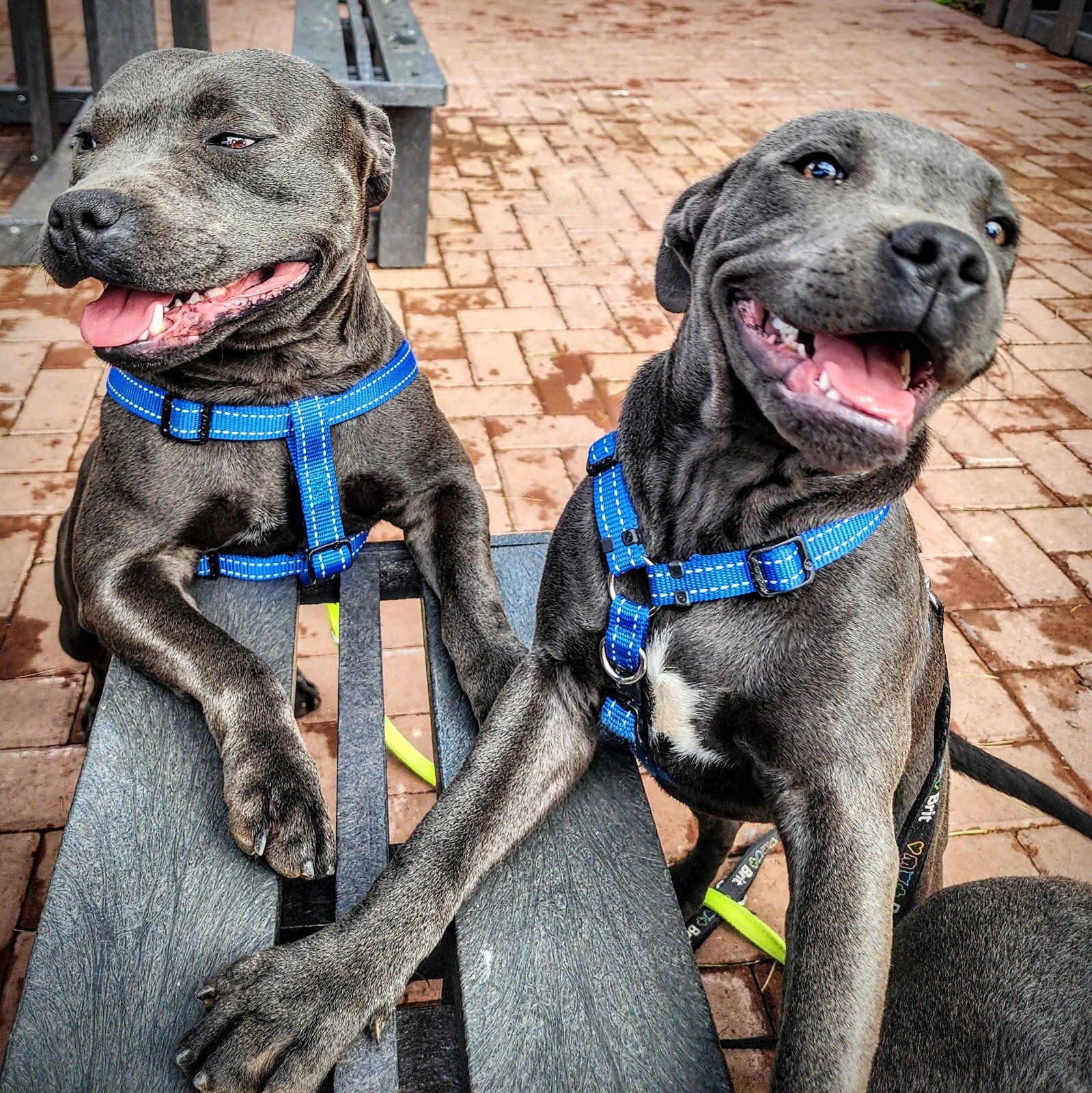History of Staffords
The Stafford is a descendant of the now extinct Bull and Terrier cross, an ancestry developed in England in the early 19th century. The Bull Terrier, founded by James Hinks of Birmingham, England, the Stafford, the American Staffordshire Terrier and American Pit Bull Terrier all trace back to the bull-type terrier breeds with the common component being the Bulldog.
After the banning of blood sports and pit fighting in 1835, attitudes changed which, over the course of centuries, resulted in generations of responsible breeding and further breed refinement of the Stafford as a popular family pet and companion dog. The Stafford’s association in early 19th century as a fighting dog made it difficult to gain recognition by the Kennel Club (KC) in the United Kingdom (UK) but was eventually added to their purebred registry in 1935. Staffords first arrived in North America in the mid to late 1880s but it was not until 1974 that the American Kennel Club (AKC) accepted the Staffordshire Bull Terrier into their purebred registry.
Before the 19th century, bloodsports such as bull baiting, bear baiting and cock fighting were common. Bulls brought to market were set upon by dogs as a way of tenderizing the meat and providing entertainment for the spectators; and dog fights with bears, bulls and other animals were often organized as entertainment for both royalty and commoners.
In early days Bull & Terriers were not bred to resemble the companion animals of today, but for the characteristic known as gameness, with the pitting of dogs against bear or bull and exotic animals testing this attribute along with the strength and skill of the dog.
These early “proto-staffords” provided the ancestral foundation stock for the Staffordshire Bull Terrier, the Bull Terrier, the American Pit Bull Terrier and American Staffordshire Terrier. This common ancestor was known as the “Bull and Terrier”.
These bloodsports were officially eliminated in 1835 as Britain began to introduce animal welfare laws. Since dogfights were cheaper to organize and far easier to conceal from the law than bull or bear baits, bloodsport proponents turned to pitting their dogs against each other instead. Dog fighting was used as both a bloodsport (often involving gambling) and a way to continue to test the quality of their stock. For decades afterward, dog fighting clandestinely took place in pockets of Britain and America.
Dogs were released into a pit, and the last dog still fighting (or occasionally, the last dog surviving) was recognized as the winner. The quality of pluckiness or “gameness” was still highly prized, and dogs that gave up during a fight were reviled as “curs.” Despite being trained to be aggressive towards fellow dogs, they had to be of good temperament with people as the handler would have to bring the dog back to scratch for each round.
As time went on the modern breed has become one with a temperament suitable for a pet and companion. It gained respectability, becoming a dog worthy to show, and was accepted by The Kennel Club of the United Kingdom as the Staffordshire bull terrier in 1935.
Examples of the breed currently found in the United States have no local fighting history, being descendants of the later show dogs who migrated over the Atlantic from the United Kingdom.



